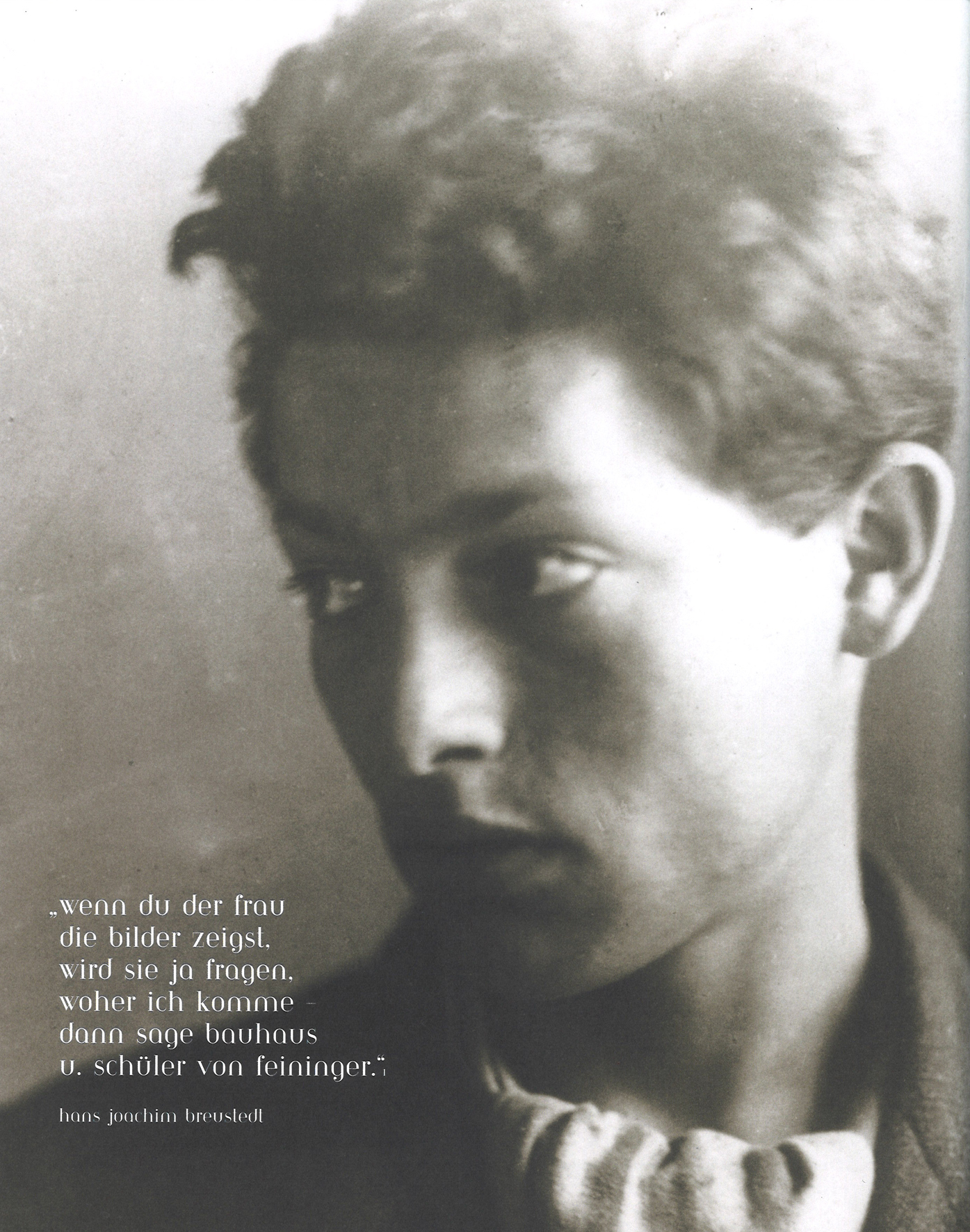Hans Joachim Breustedt represents a generation of artists whose lives and work were deeply shaken by National Socialism and the Second World War.
The murder of his first wife in the Treblinka concentration camp,
military service and imprisonment left their mark on Breustedt the man - the ban on painting that preceded it, the consequences of his
exclusion from the Reich Chamber of Culture and the subsequent destruction of large parts of his work during a bombing raid in Warsaw left
#their mark on Breustedt the artist.
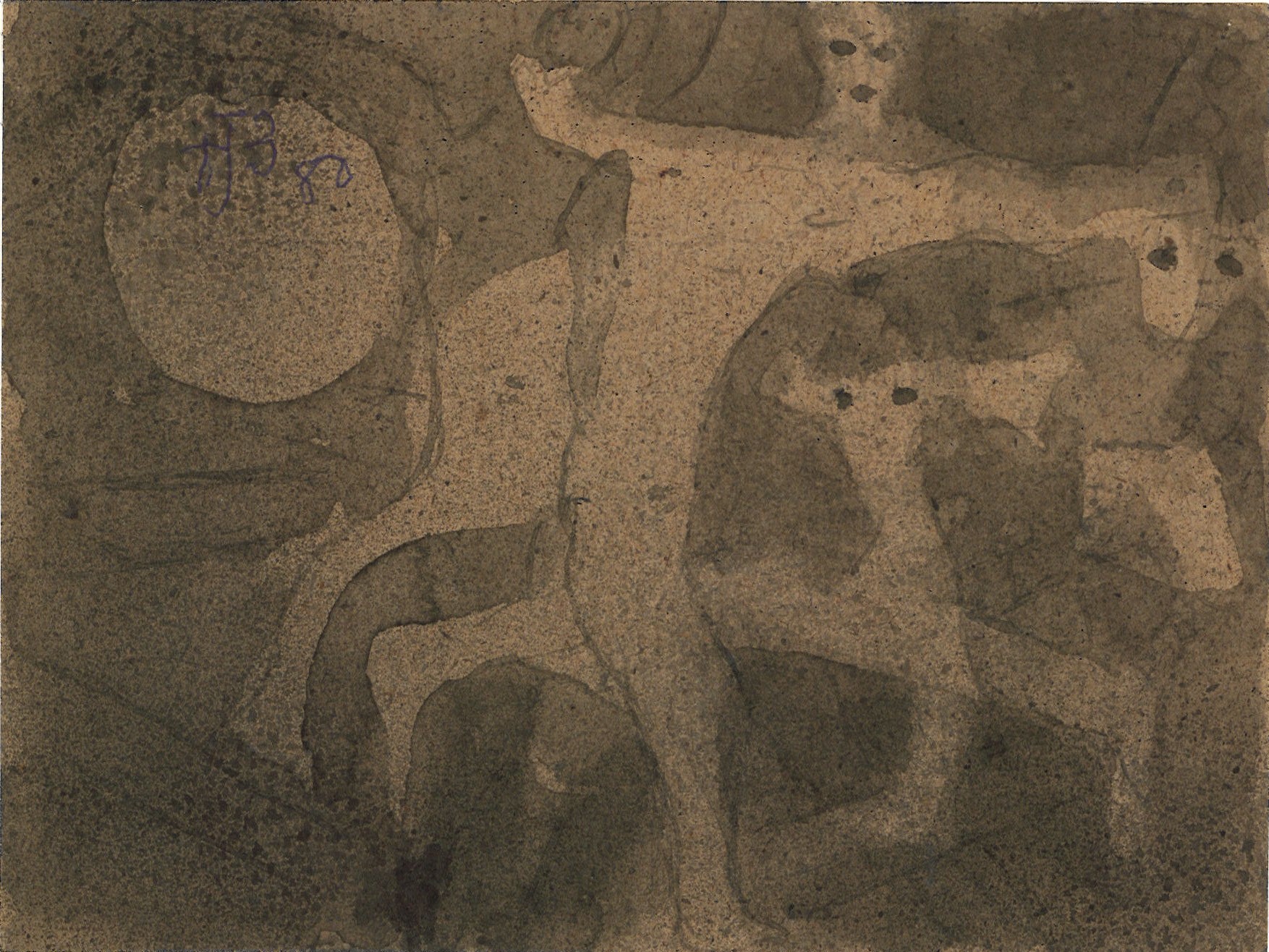
"Pastorale",
Tusche auf Papier,
1980,
11 x 15 cm
The painter Hans Joachim Breustedt, a Bauhaus master student of Lyonel Feininger, and his Polish-Jewish wife Sofia lived with their daughter Marysia in Weimar in the early 1930s. In view of the Nazi persecution of Jews, the parents sent Marysia to live with her grandmother in Lviv, Poland, in 1935, and a few years later to Switzerland. They kept in touch with Marysia through letters. At the beginning of 1939, Marysia returned to Weimar, where she saw her mother for the last time.
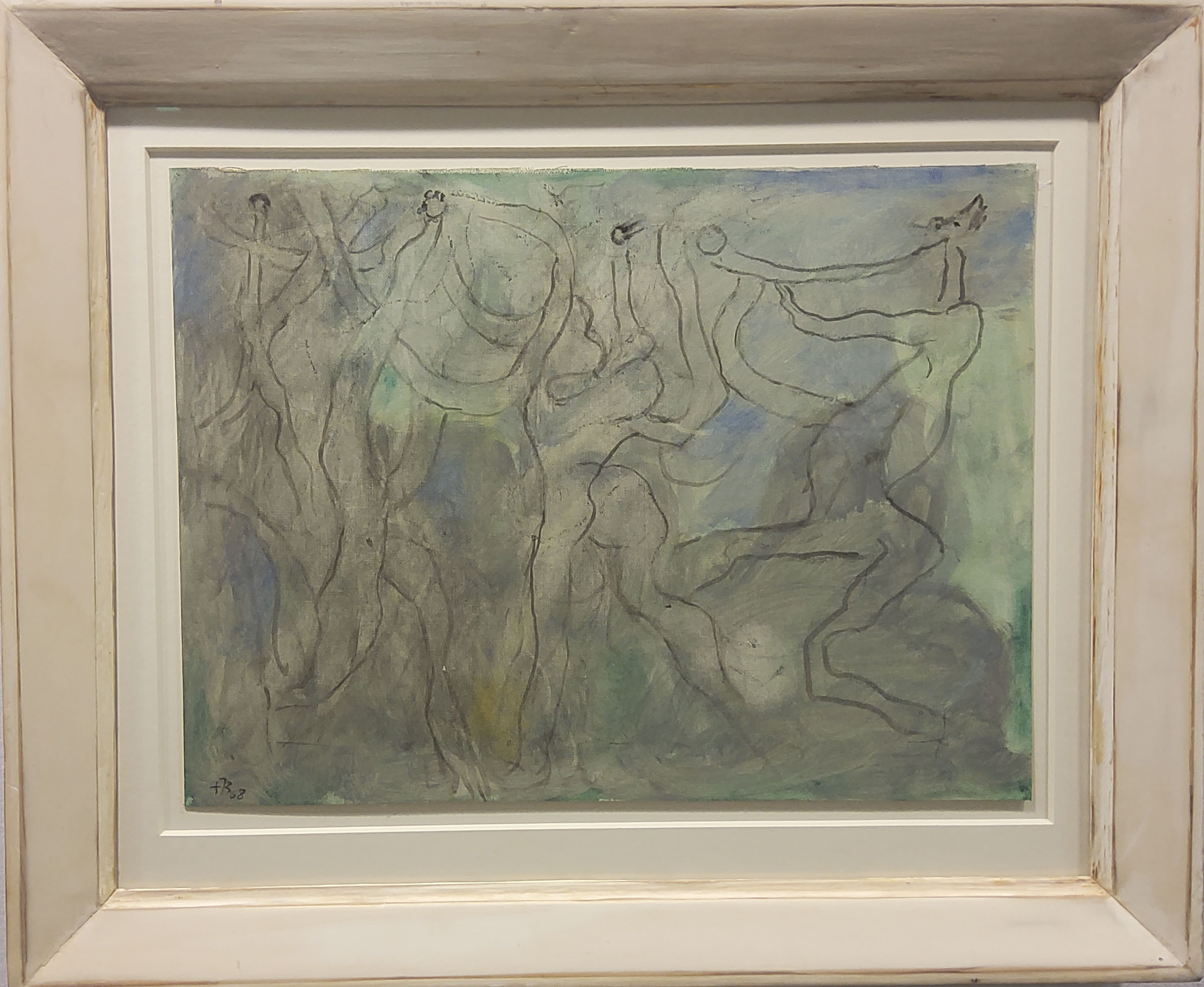
"Reigen",
Öl auf Leinwand,
1968,
33.5 x 45 cm
Hans Joachim Breustedt narrowly escapes imprisonment in a camp in Poland and travels to visit friends in Upper Austria. There he is forced into military service. He is already 41 years old. Traumatised by his experiences, he writes to his wife: 'Pictures by Breughel and Bosch are reality. The Gothic masters would not have fantasised either'.
After the war, Breustedt stays with Boby and Lu Aichinger in Vöcklabruck and spends a lot of time with his long-time friend and fellow painter Werner Gilles. In 1950, Hans Joachim Breustedt was granted Austrian citizenship and was finally able to visit his daughter in Switzerland.
After the war, Breustedt stays with Boby and Lu Aichinger in Vöcklabruck and spends a lot of time with his long-time friend and fellow painter Werner Gilles. In 1950, Hans Joachim Breustedt was granted Austrian citizenship and was finally able to visit his daughter in Switzerland.
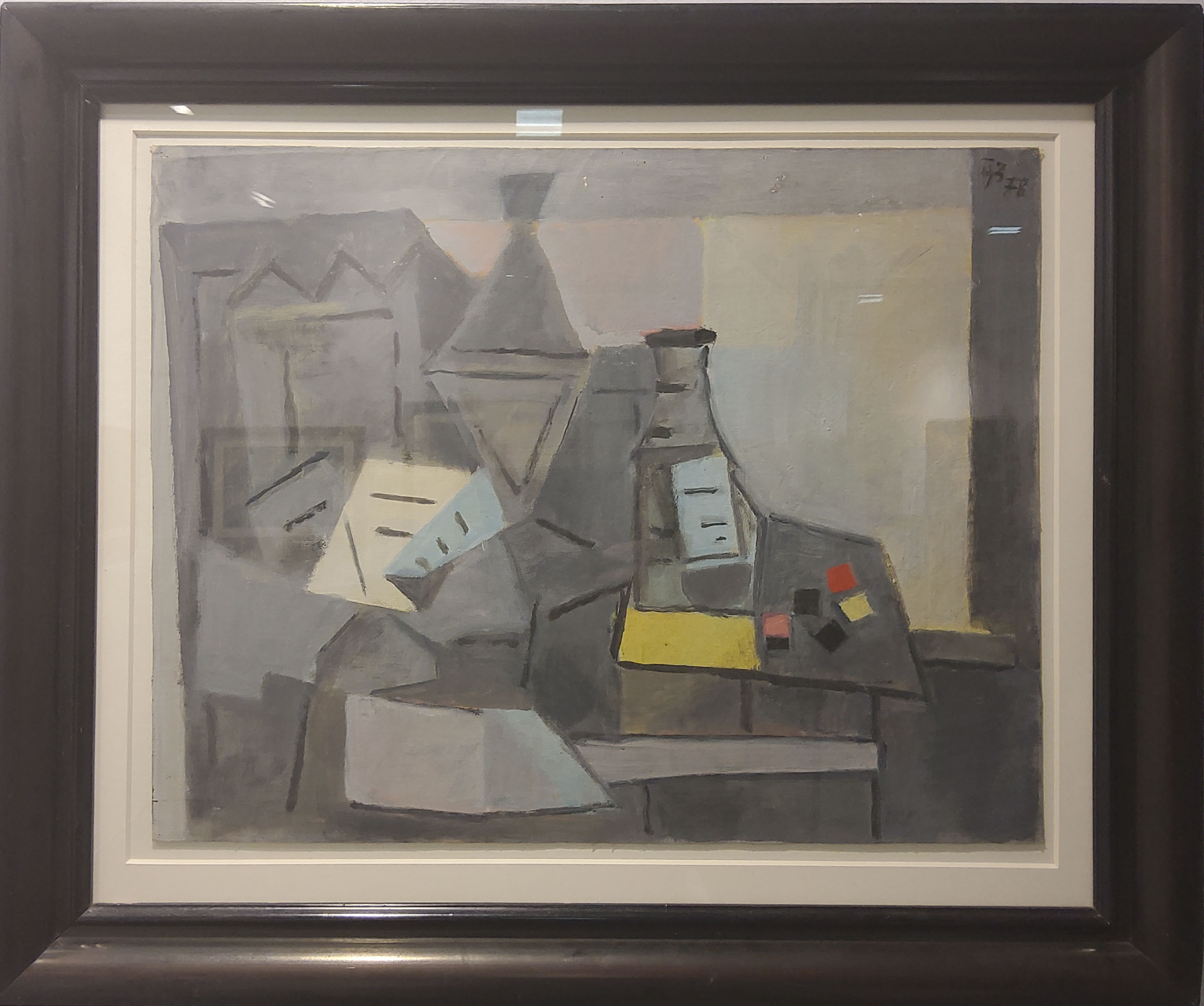
"Stillleben",
Öl auf Leinwand,
1978,
47 x 60 cm
He married a second time - to the artist Margret Bilger - and immersed himself in painting and drawing for the rest of his life.
Although almost all of his early work was destroyed in Warsaw, Breustedt left behind hundreds of paintings and drawings, most of which are kept in private collections and museums.
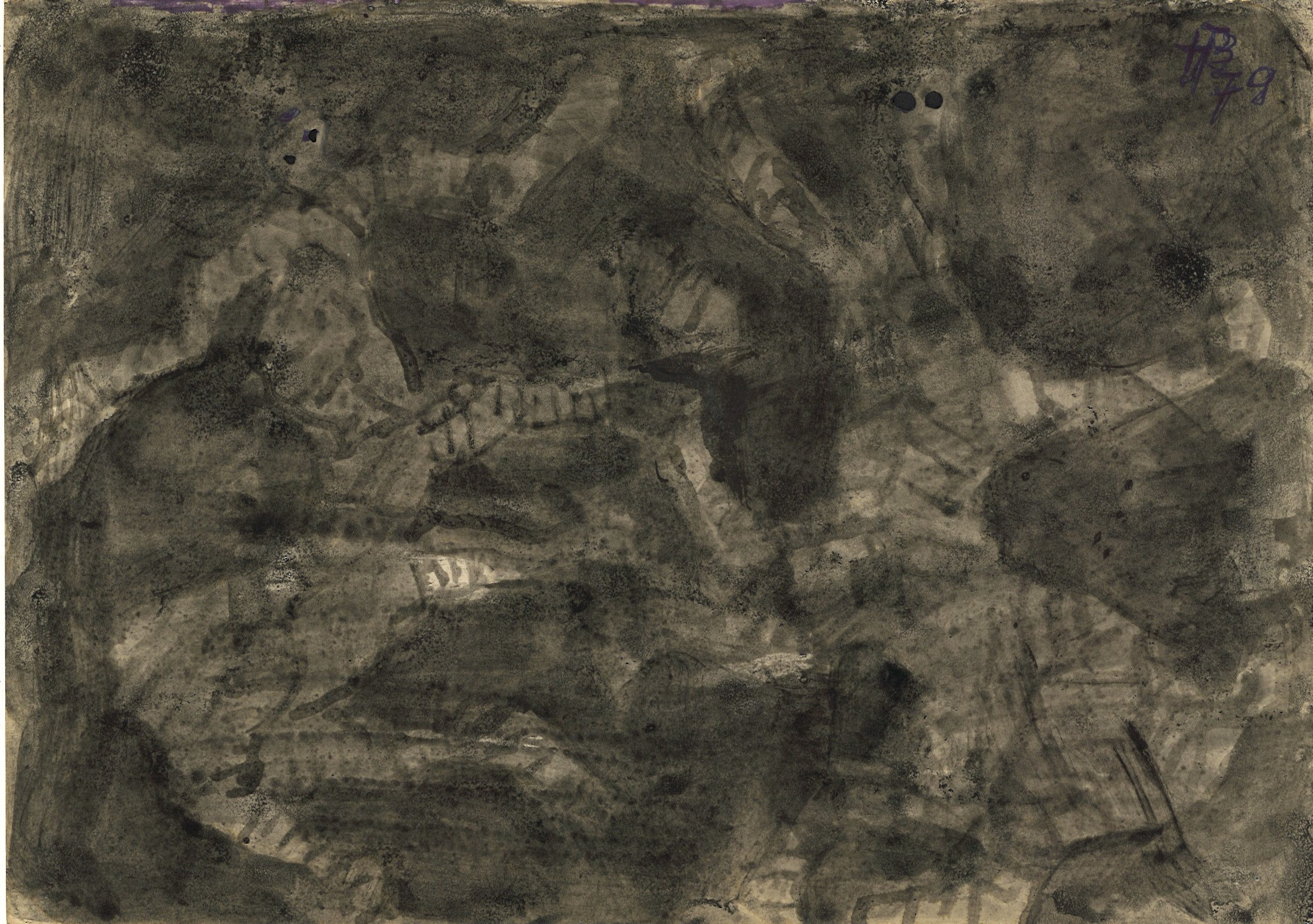
"Zwei tanzende Kentauren",
Tusche auf Papier,
1979,
15 x 21 cm
